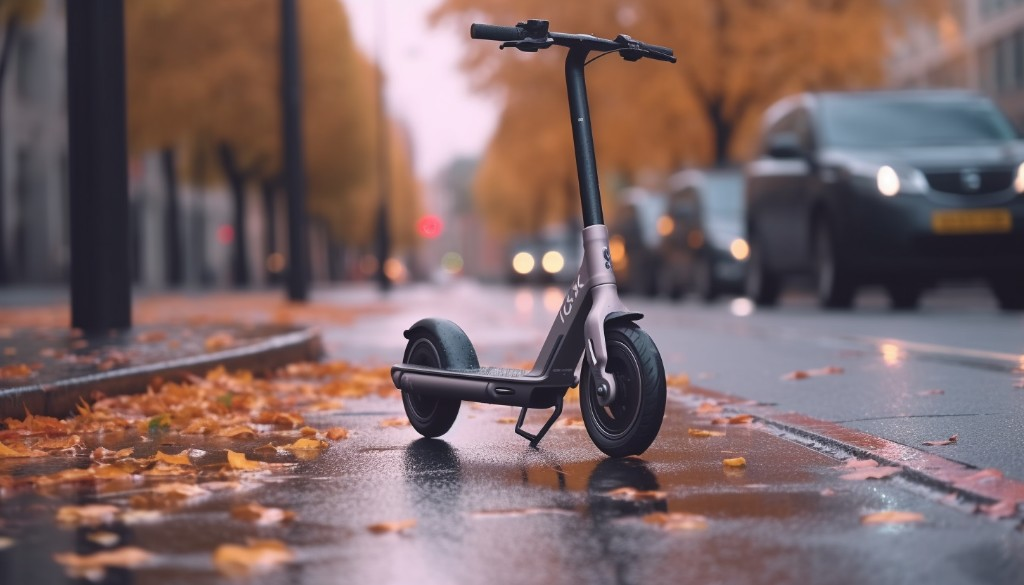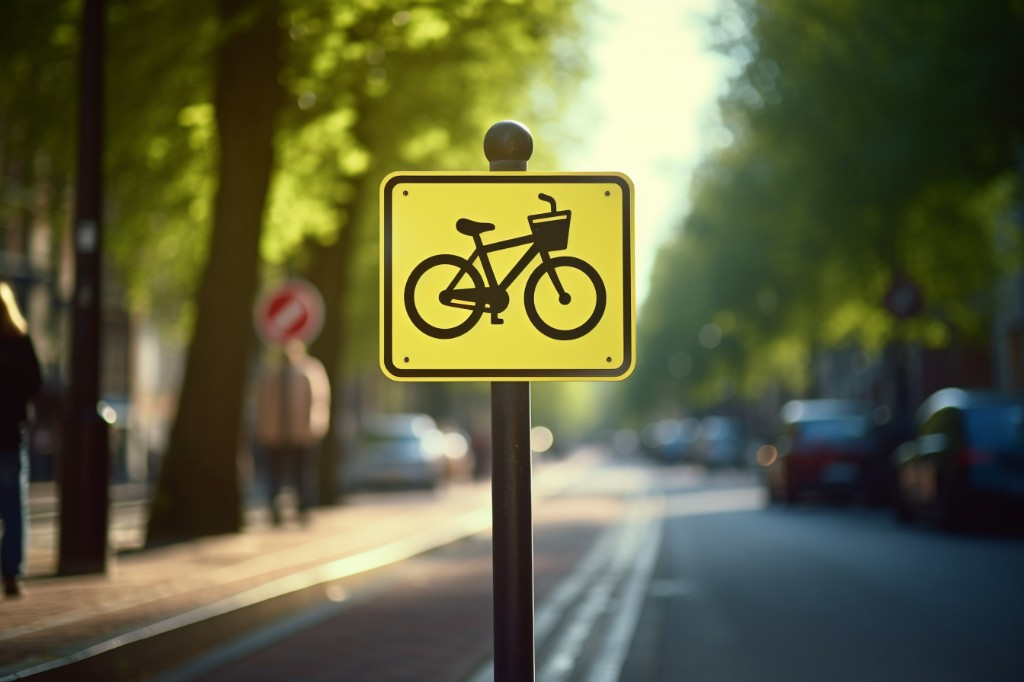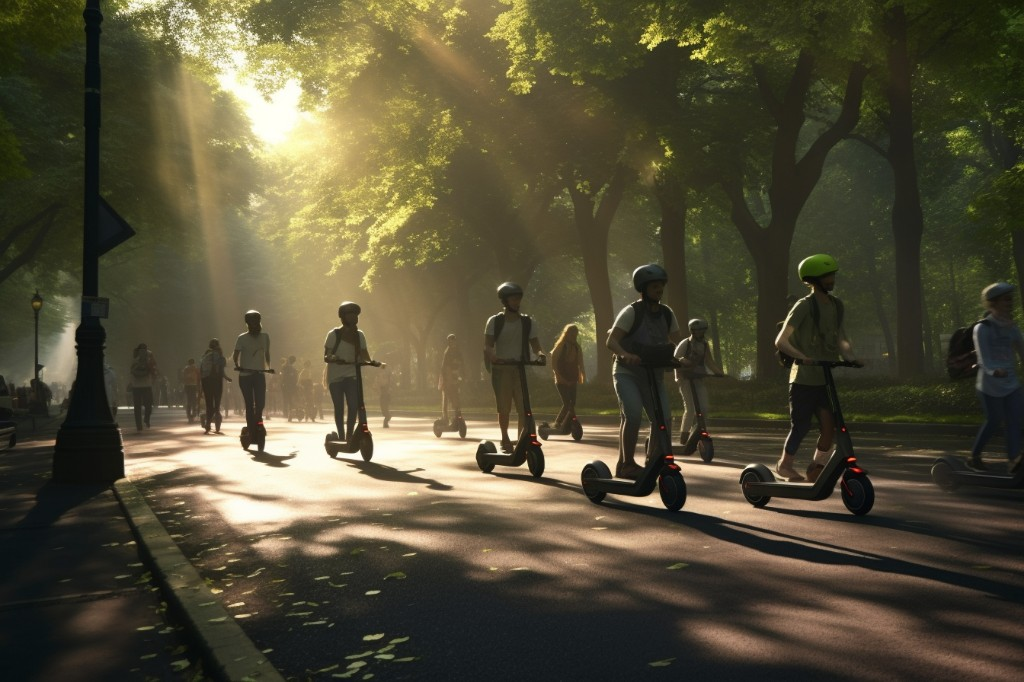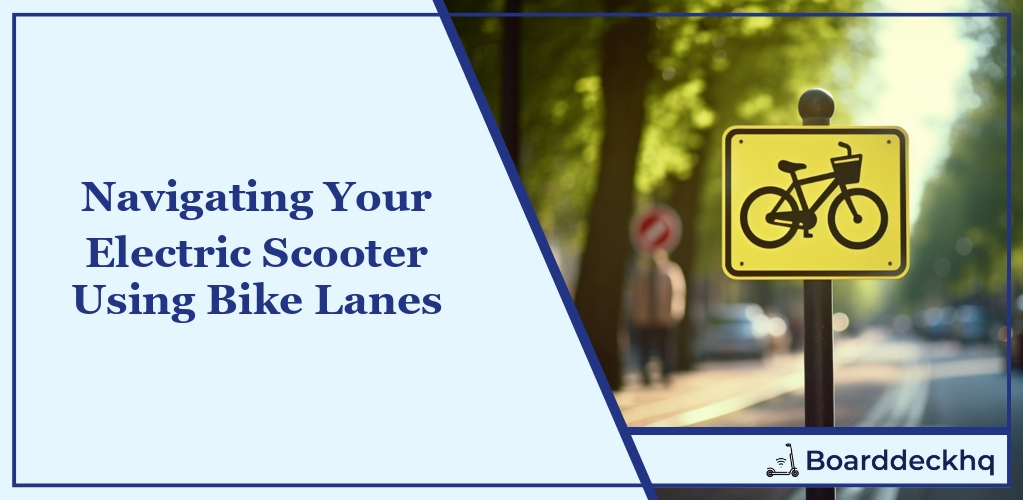As the sun peeks over the horizon, have you ever noticed the increasing number of electric scooters humming down bike lanes, and found yourself wondering if that’s even allowed? It’s a modern question for a rapidly evolving world, as we grapple with the integration of new, greener modes of transportation into our traditional infrastructure.
What we’ll cover:
- Electric Scooters: A Rising Trend
- The Electric Scooters and Bike Lanes Controversy
- Rules and Regulations: A Global Perspective
- Safety Measures for Scooter Riders in Bike Lanes
- The Future of Urban Transport: Impact of Electric Scooters
With helmet secured and curiosity piqued, let’s zoom into this electrifying debate!
Understanding Electric Scooters and Their Popularity
Electric scooters, or e-scooters, as they are often referred to, are the new kids on the block when it comes to personal transportation. These lightweight, battery-powered vehicles have swiftly become a common sight in cities worldwide. It’s like witnessing a modern-day version of the 19th-century bicycle boom, only this time, the wheels are powered by electricity, not pedal power.
One reason for the sudden surge in popularity of electric scooters is their contribution to sustainable commuting. As more people become conscious of their carbon footprint, swapping gas-guzzling cars for eco-friendly e-scooters seems like a no-brainer. Not only do electric scooters produce zero emissions, but they also reduce traffic congestion and the demand for parking spaces. This transformation in our commuting habits is what some refer to as “active commuting”, a lifestyle change that blends physical activity into our daily travel.

The Debate: Electric Scooters in Bike Lanes
As the popularity of electric scooters continues to rise, so too does the debate around their place in our transportation infrastructure. More specifically, should e-scooters be allowed to ride in bike lanes?
Some argue that bike lanes are designed for bicycles, not scooters. They claim that the different speeds and riding styles between cyclists and E-Scooter users could lead to accidents. Others counter this by pointing out that bike lanes are often underutilized and could easily accommodate both bikes and e-scooters without issue.
There’s also a question of fairness. Cyclists have fought long and hard for dedicated bike lanes, so should electric scooter users, who’ve just recently entered the scene, be allowed to share these spaces?
On the other hand, proponents of scooters in bike lanes argue that e-scooters are much safer in bike lanes than on the road or sidewalks. Bike lanes provide a designated space away from both pedestrian traffic and larger, faster vehicles, which reduces the potential for accidents.

Regulations Across Different Cities and Countries
The debate around electric scooters in bike lanes isn’t just philosophical; it’s also legal. Different cities and countries have different traffic rules and local laws about where e-scooters can be ridden.
For instance, in many European cities, electric scooters are treated as bicycles and are allowed to ride in bike lanes. In contrast, in some parts of the US, E-Scooters are classified as motor vehicles and are prohibited from bike lanes. In other places, there are no specific laws addressing e-scooters at all, leaving users unsure of where they can legally ride.
This lack of uniformity can cause confusion for electric scooter users, especially those who travel frequently. It highlights the need for clear, standardized transportation policies regarding e-scooters and other emerging forms of personal transportation.
As you can see, the topic of electric scooters in bike lanes is a complex one, filled with passionate opinions and differing regulations. As these vehicles continue to rise in popularity, it’s crucial that we continue this conversation and work towards solutions that balance safety, accessibility, and sustainability.

Safety Concerns and Guidelines for Electric Scooters in Bike Lanes
As we dive into the world of electric scooters using bike lanes, let’s not forget that road safety is paramount. It’s like playing a video game, only the stakes are real, and there are no extra lives. If the bike lane rules are not followed, it can result in accidents, causing harm not just to the riders but also to pedestrians and cyclists.
Sharing Bike Lanes Safely
Electric scooters, although relatively slower than bikes, can still pose a risk if riders don’t observe basic safety protocols. A few essential tips include:
- Wearing a Helmet: This is the golden rule of any wheeled activity. A helmet can be a lifesaver in case of an accident.
- Keeping to the Right: Similar to road rules, keeping to the right allows faster traffic (like bicycles) to pass safely.
- Signaling Turns: Just as cars use indicators, electric scooter riders should use hand signals before turning or stopping.
Pedestrian Safety
Pedestrian safety is another key aspect of electric scooters in bike lanes. Scooter riders must always yield to pedestrians. It’s like being a guest at someone’s house; you don’t want to be that person who knocks over the vase.
Adhering to Speed Limits
Speed limits are set for a reason. Going too fast on an electric scooter can be just as dangerous as speeding in a car. A leisurely pace allows for better reaction time and reduces the chances of accidents.

Implications for Urban Planning and Public Transport
The rise of electric scooters in bike lanes is more than just a fad; it has far-reaching implications for urban planning and public transport. It’s like adding a new spice to an old recipe, it changes the flavor entirely.
Redesigning Urban Spaces
Urban planning needs to adapt to accommodate electric scooters. More dedicated bike lanes, specific parking areas, and wider sidewalks for electric scooters could become necessary. This shift could lead to more people-friendly and less car-centric cities.
Impact on Public Transport
Electric scooters can also have a significant impact on public transport. They provide a viable option for ‘last-mile’ transport – that final stretch from the bus stop or subway station to your destination. It’s like having a personal chauffeur waiting for you at the station, only you’re the one driving.
Bike Lane Usage
Bike lane usage may also see a change with the influx of electric scooters. Cities might need to enforce stricter bike lane rules or even consider creating separate lanes for e-scooters and bicycles. It’s a tricky balance to strike – it’s like trying to fit two different puzzle pieces together; they need to be compatible but still maintain their individual shapes.
As we navigate this new landscape of urban mobility, it’s clear that electric scooters in bike lanes are more than just a convenience; they’re catalysts for change. As they become more popular, it’s crucial to address safety concerns and adapt our cities to accommodate them effectively. It’s an exciting journey, and we’re just at the beginning.

Closing Thoughts
In the face of rising popularity, electric scooters have spurred a debate on their place in bike lanes. With varying regulations across different cities and countries, it’s clear that there isn’t a one-size-fits-all answer to whether electric scooters are allowed in bike lanes. The safety concerns and guidelines surrounding this issue are complex and evolving, influencing not just scooter users but urban planning and public transport systems. As we navigate the implications of this new mode of transport, it’s crucial for riders to be informed about the specific rules in their localities, and for cities to carefully consider the impact on their urban infrastructure.
Frequently Asked Questions
Are electric scooters allowed in bike lanes everywhere?
No, the permission for electric scooters to use bike lanes varies from city to city, and country to country. Some places allow it, while others restrict or completely ban it. It is important to check the specific regulations in your area before using an electric scooter in a bike lane.
What are the safety guidelines for riding an electric scooter in a bike lane?
The safety guidelines can differ based on the locality, but generally, riders should maintain a safe speed, keep a safe distance from other users, and use appropriate signals for turning or stopping. Wearing protective gear such as helmets and reflective clothing is also highly recommended.
How fast can I go on an electric scooter in a bike lane?
The speed limit for electric scooters in bike lanes can vary based on local laws. However, a common limit is around 15 mph (24 km/h). Always ensure you’re riding at a safe speed and in accordance with any posted speed limits.
Are there penalties for riding an electric scooter outside of a bike lane?
Yes, there can be penalties for riding an electric scooter outside of designated areas like bike lanes, depending on local laws. These penalties can range from fines to confiscation of the scooter.
How can I find out about the specific regulations in my city or country?
To find out about the specific regulations in your city or country, you can check with local law enforcement agencies, transport departments, or city councils. Online resources, such as the local government’s website, can also provide useful information.
